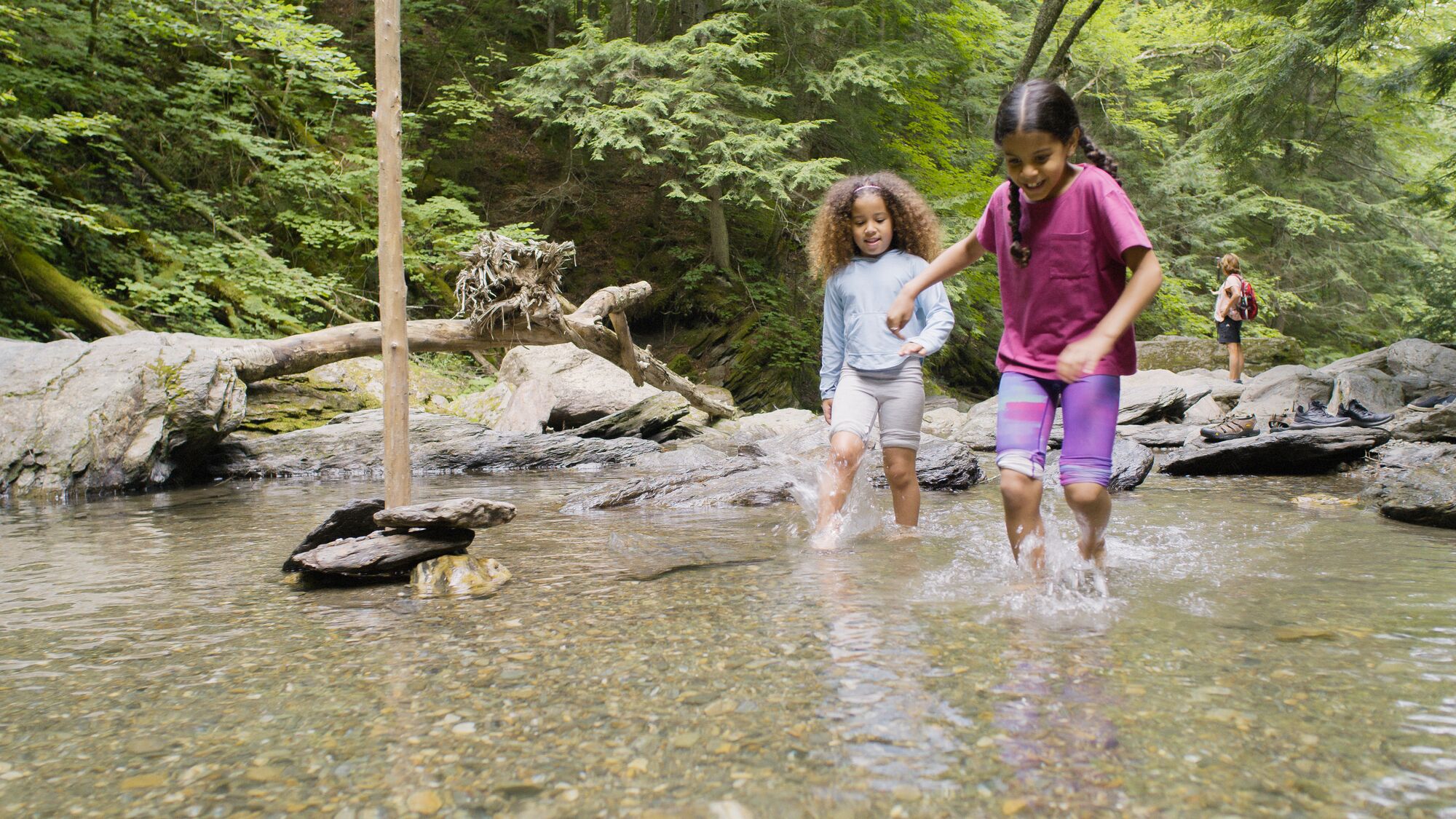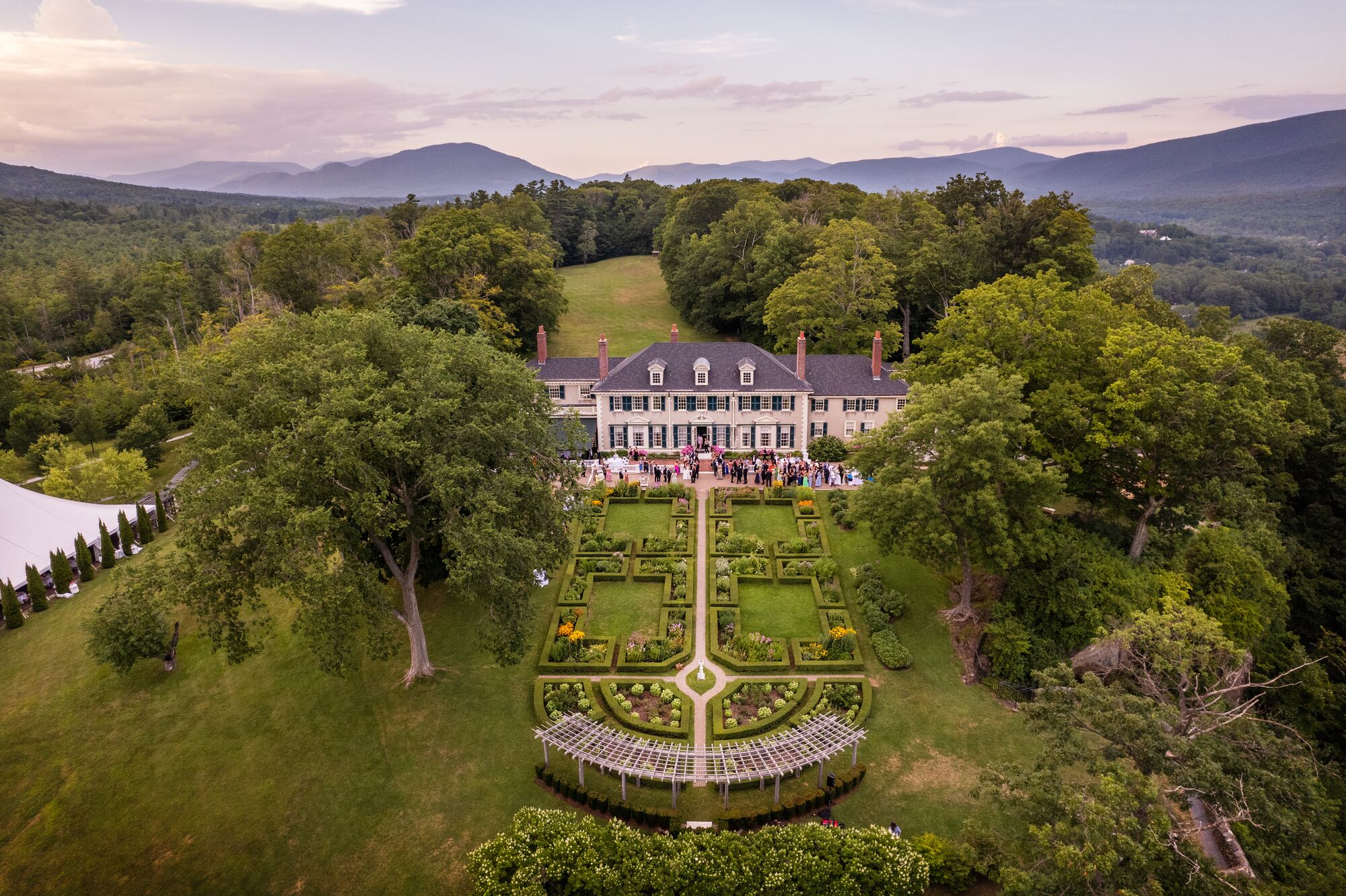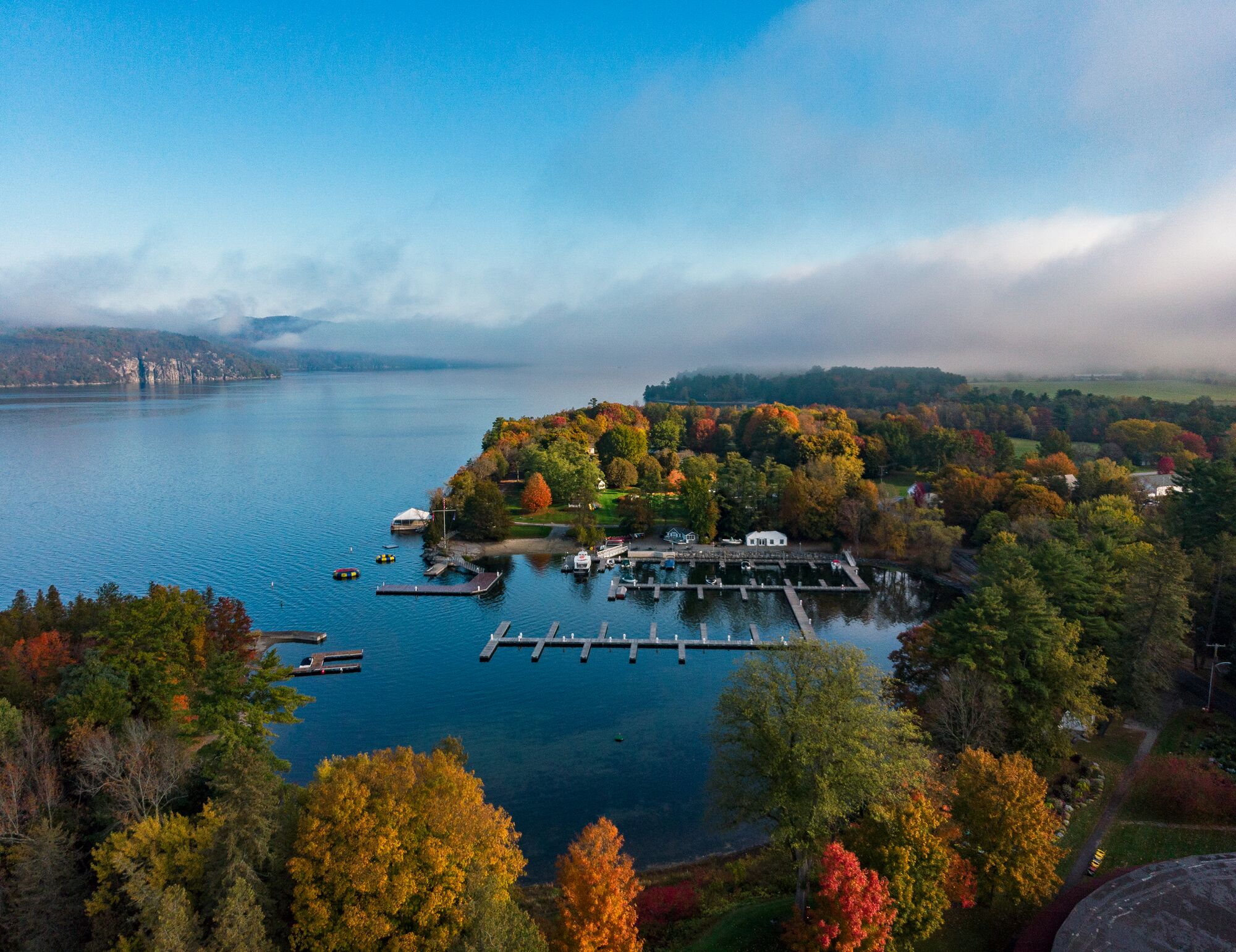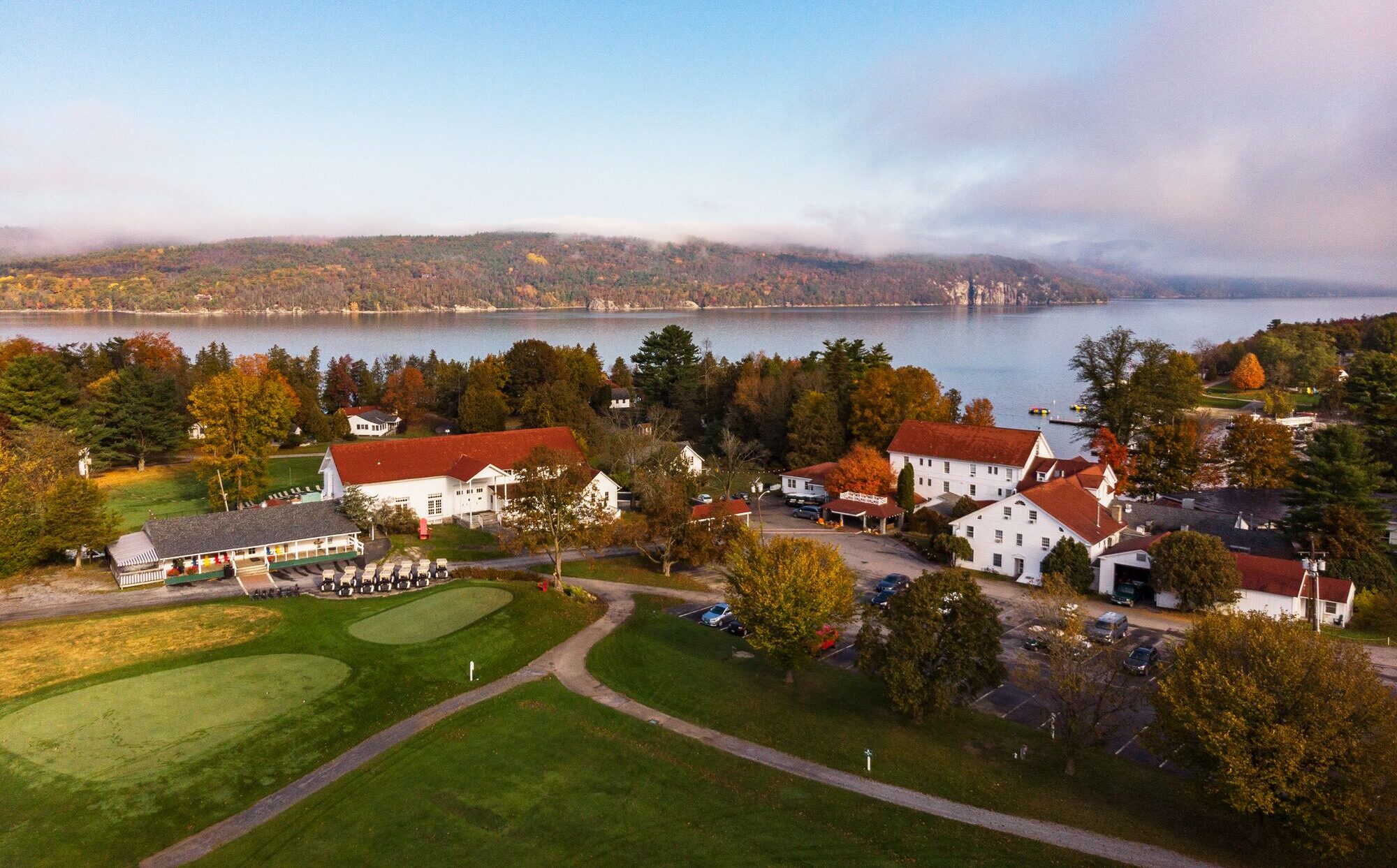Champlain Valley
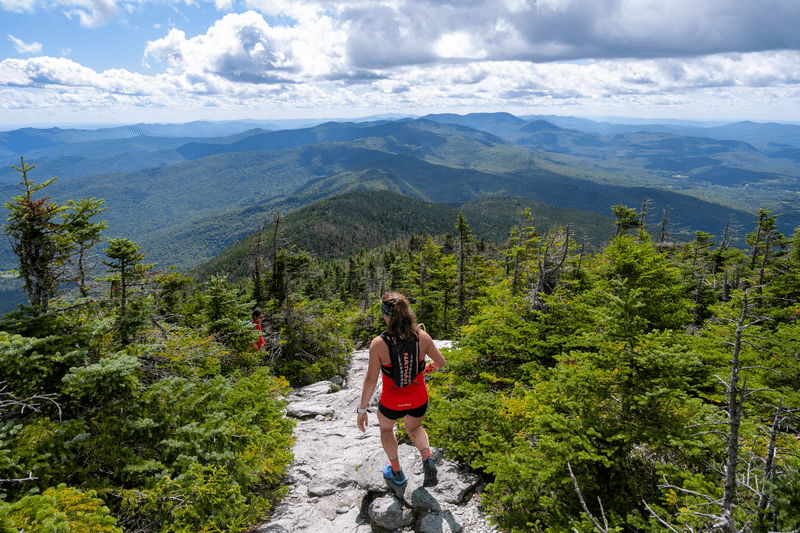
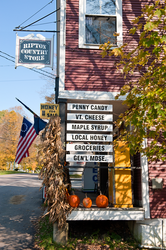
Champlain Valley
A broad apron of gently rumpled land that’s dotted with dairy farms and orchards, the Champlain Valley spreads from the central Green Mountains to Lake Champlain. In the west, corkscrew roads climb a trio of mountain passes—the Appalachian, Lincoln, and Middlebury gaps—and descend into foothill villages like Ripton, where Robert Frost once found inspiration. In the east, shoreline towns such as Ferrisburgh and Shoreham represent the Champlain Valley’s “lake life” vibe. In the middle? One of the top liberal arts colleges in the country, with all the lively dining, shopping, and events that come along with it.
Most of the Champlain Valley lies in Addison County, the seat of which is Middlebury. Gathered snugly around the falls of Otter Creek, Middlebury may be best known as the home of Middlebury College, whose Mahaney Arts Center is a magnet for lovers of arts and culture. The MAC, as it’s known, includes a black-box theater, a dance theater, a recital hall, and an art museum filled with antiquities, photography, sculpture, and more. Anchoring downtown are the stately brick Middlebury Inn, dating to 1827, and the Congregational church, with its spectacular multi-tiered steeple. The Henry Sheldon Museum and the Vermont Folklife Center, meanwhile, brim with local history and color.
Outdoor adventures can be found in all seasons in the Champlain Valley. Cross-country skiers flock to Ripton to glide down trails at Middlebury College’s superb Rikert Outdoor Center; in warmer months, the tiny town also sees its share of cyclists as they tour the area’s scenic but challenging asphalt and gravel roads. Anyone who passes through is bound to stop at the circa-1879 Ripton General Store, a nostalgic reminder of the days when a country store was the heart of most small communities.
Hikers have a big swath of the Green Mountain National Forest in which to play, including two standout “parks within a park.” The Breadloaf Wilderness is the largest federally designated wilderness area in Vermont, and its 25,000-plus acres are completely free of boats, bikes, cars, and other reminders of civilization. Sitting next to lovely Lake Dunmore is the 16,000-acre Moosalamoo National Recreation Area, where a trek up Mount Moosalamoo pays off with views of Lake Dunmore, Lake Champlain, and New York’s Lake George.
The town of Weybridge is where you’ll find the University of Vermont’s Morgan Horse Farm, which welcomes visitors from May through October. The sturdy, muscular Morgan, once prized as a cavalry horse, is now Vermont’s official state animal. Morgans bred right here have helped spread the breed’s fame throughout the world.
Just up the road is Vergennes, a small city that packs a lot of interest into just two square miles. As with Middlebury, Vergennes’s charming downtown is tucked against an Otter Creek waterfall. It was just below those falls, in 1813, that U.S. Navy officer Thomas Macdonough began building the fleet of warships that would defeat the British in the Battle of Plattsburgh the following year. The Lake Champlain Maritime Museum is the place to learn about that battle and much more, including the fascinating story of Lake Champlain’s many shipwrecks.
The Champlain Valley is Vermont’s apple country, and early fall is pick-your-own and cider-sampling time at orchards and cideries in Shoreham, Cornwall, Addison, and other Addison County villages. Plus: Lake Champlain’s gentling influence on the valley’s climate means that autumn colors linger longer here.
Vermont’s extensive state park system takes advantage of the long Lake Champlain shoreline, deeply indented with the rugged outlines of bays and inlets. In Ferrisburgh, Kingsland Bay State Park is flush with attractive picnic areas and footpaths. Farther south, the Button Bay and D.A.R. state parks offer camping and day-use areas (at Button Bay, it’s fun to search the shore for the small clay “buttons” with holes pierced by long-gone aquatic plants).
And at Chimney Point State Historic Site in Addison, learn about the indigenous, French, and early American inhabitants of the Champlain Valley. Here’s where the graceful Lake Champlain Bridge leaps the lake’s narrow waist, and the meandering pathways from mountains to waterside end.
Top Picks by Season from Yankee Magazine
Things To Do In the Champlain Valley
Summer
Morgan Horse Farm
Weybridge
Branbury State Park/Lake Dunmore
Vergennes
Lake Champlain Maritime Museum
Vergennes
Bristol Falls
Bristol
Addison County Fair
Vergennes
Fall
Champlain Orchards
Shoreham
Mount Independence
Orwell
Bristol Harvest Festival
Bristol
Foliage Paddling on Otter Creek
Regionwide
Riding the Gaps
Lincoln, Addison, Middlebury, and Brandon
Winter
Very Merry Middlebury
Middlebury
Rikert Outdoor Center
Ripton
Stroll the Robert Frost Trail
Ripton
Dakin Farm
Ferrisburgh
Minifactory
Bristol
Spring
Birdwatching & Visitors Center
Addison
Maple Landmark
Middlebury
lu•lu Ice Cream
Vergennes
Rokeby Museum
Ferrisburgh
Ralph Myhre Golf Course
Middlebury
